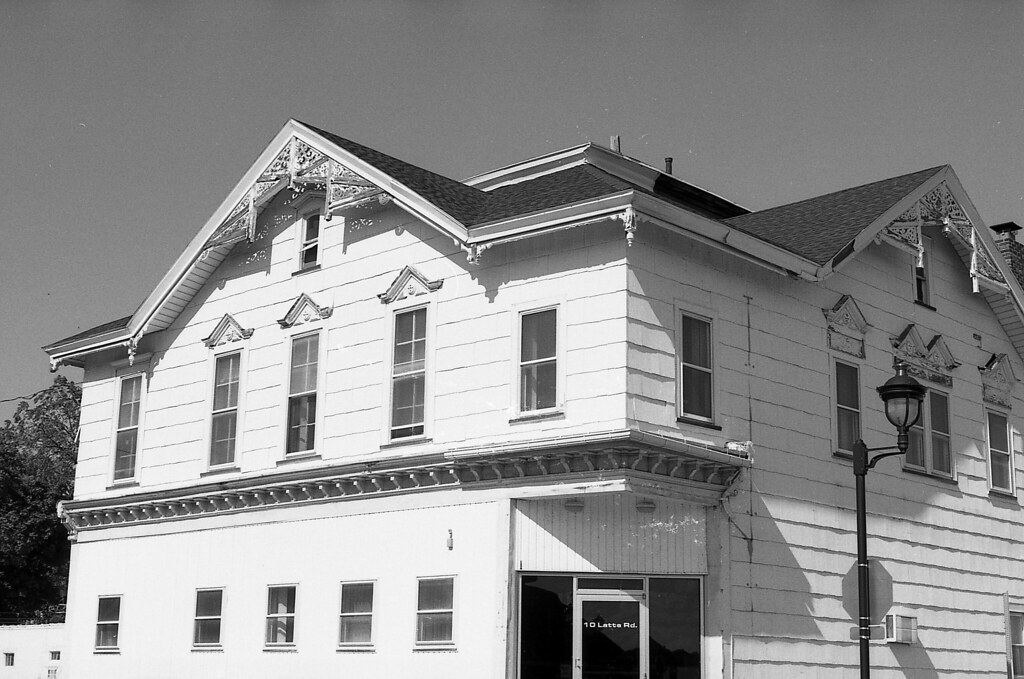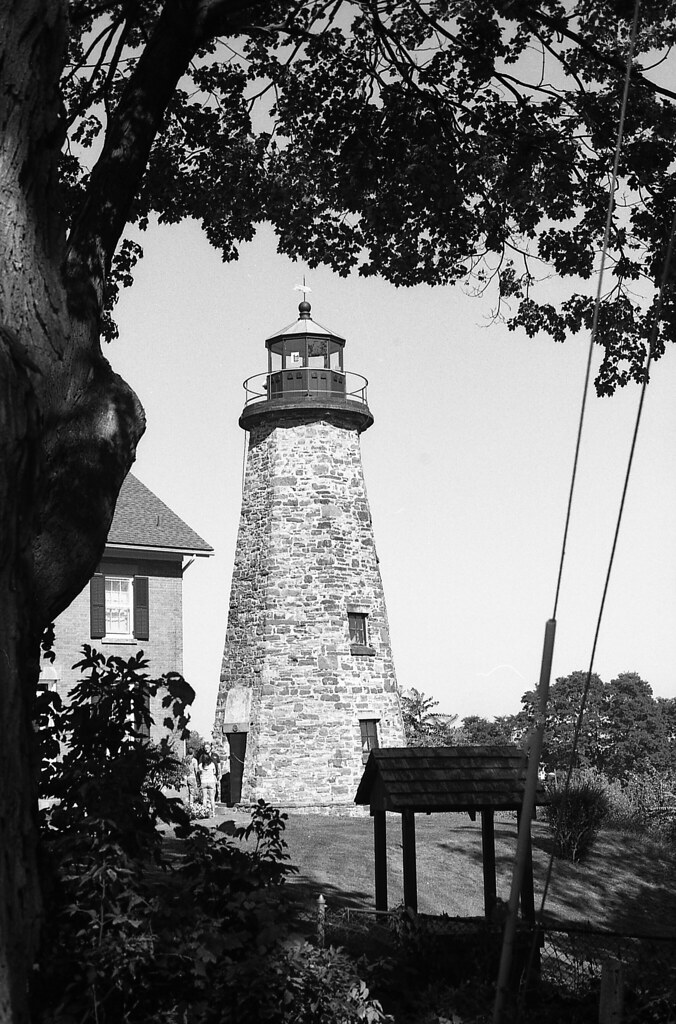Both the United States Navy and the Royal Navy knew that who ever had control of the lakes and water ways could control the battlefields on the land. The water was the fastest most effective way to move armies and supplies. On the British side the squadron on Lake Ontario was commanded by Commodore James Lucas Yeo out of the Navy Yards at Kingston. The American’s squadron out of Sacketts Harbor under Commodore Isaac Chauncey.

Nikon F4 – AF Nikkor 35mm 1:2D – Kodak Panatomic-X @ ASA-32 – Kodak Xtol (1+1) 7:30 @ 20C
By 1813 both sides had ships roaming Lake Ontario, many conducting raids against the other’s shore targets and small villages and ports where stores were held waiting for ships to come in, so they naturally became targets for the other side. The Royal Navy and US Navy engaged in economic warfare against the other.

Nikon F4 – AF Nikkor 35mm 1:2D – Kodak Panatomic-X @ ASA-32 – Kodak Xtol (1+1) 7:30 @ 20C
British ships off the small settlement of Charlotte (today part of Rochester, NY), was not a new sight to the population. But on June 13th, 1813, Yeo landed a force of 150 men, a mixed force of sailors and Royal Marines under Commander Mulcaster. Taking the citizens by surprise, preventing them from raising the alarm to the local regiment of the New York Militia and further keeping them under control by locking them in the Harbor master, Sam Latta’s house. The troops then proceeded to raid the port’s warehouse, carrying off salt pork, whiskey, and other foodstuffs. By the time the militia (a local farmer had seen the ships and went to alert the militia) the squadron had already made it out to their ships and departed without doing anymore damage.

Nikon F4 – AF Nikkor 35mm 1:2D – Kodak Panatomic-X @ ASA-32 – Kodak Xtol (1+1) 7:30 @ 20C
Today, the village of Charlotte is part of the city of Rochester, in light of the bicentennial of the war, the city has erected several plaques outlining the areas involvement in the war, complete with a peace garden by the Genesee lighthouse. Although there are many historic buildings still standing, the important one still standing is the house of Sam Latta.

Nikon F4 – AF Nikkor 35mm 1:2D – Kodak Panatomic-X @ ASA-32 – Kodak Xtol (1+1) 7:30 @ 20C
Written with files from:
Guidebook to the Historic Sites of the War of 1812 Second Edition by Gilbert Collins – 2006 The Dundurn Group Publishers
Historic Plaques at Historic Charlotte